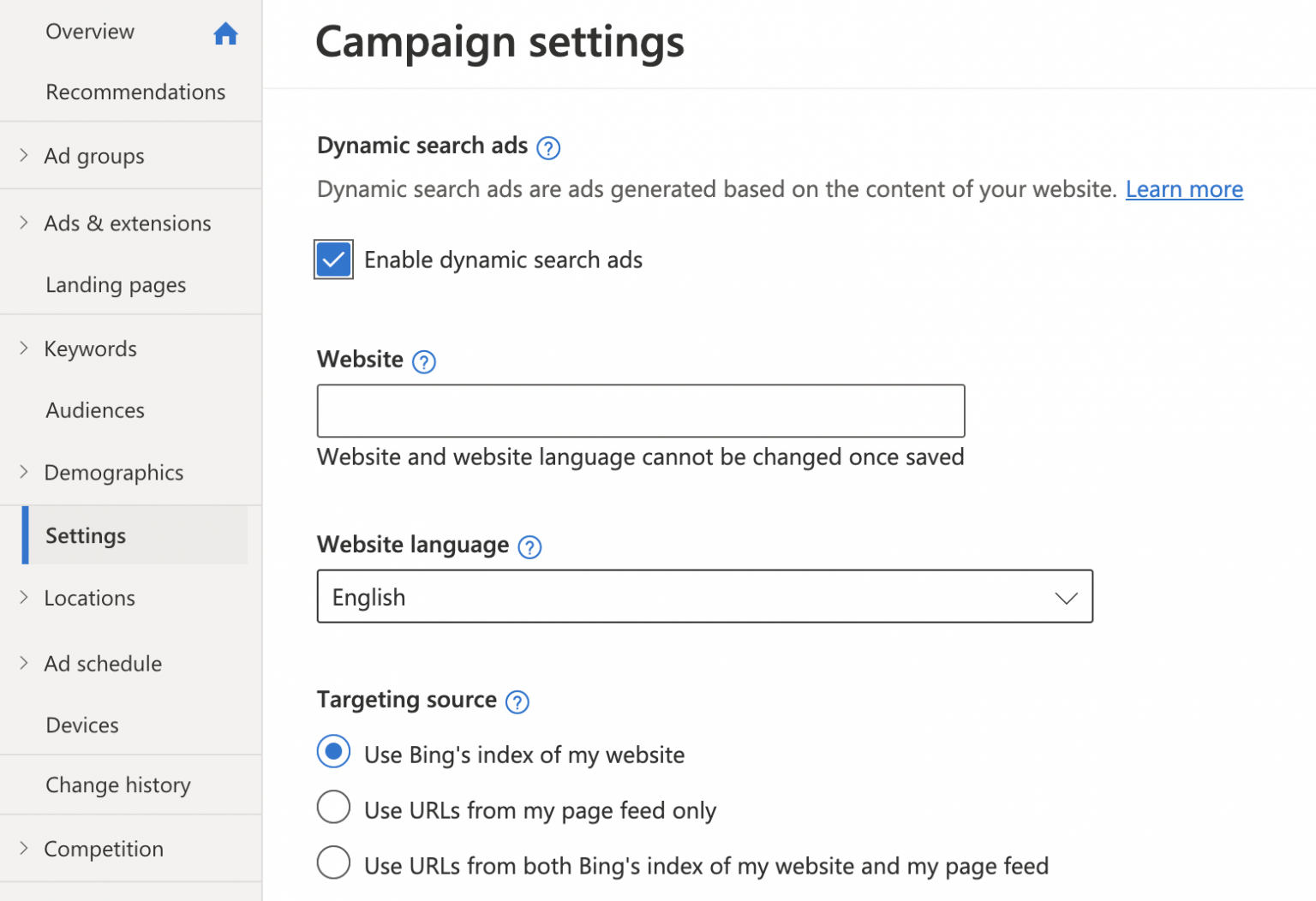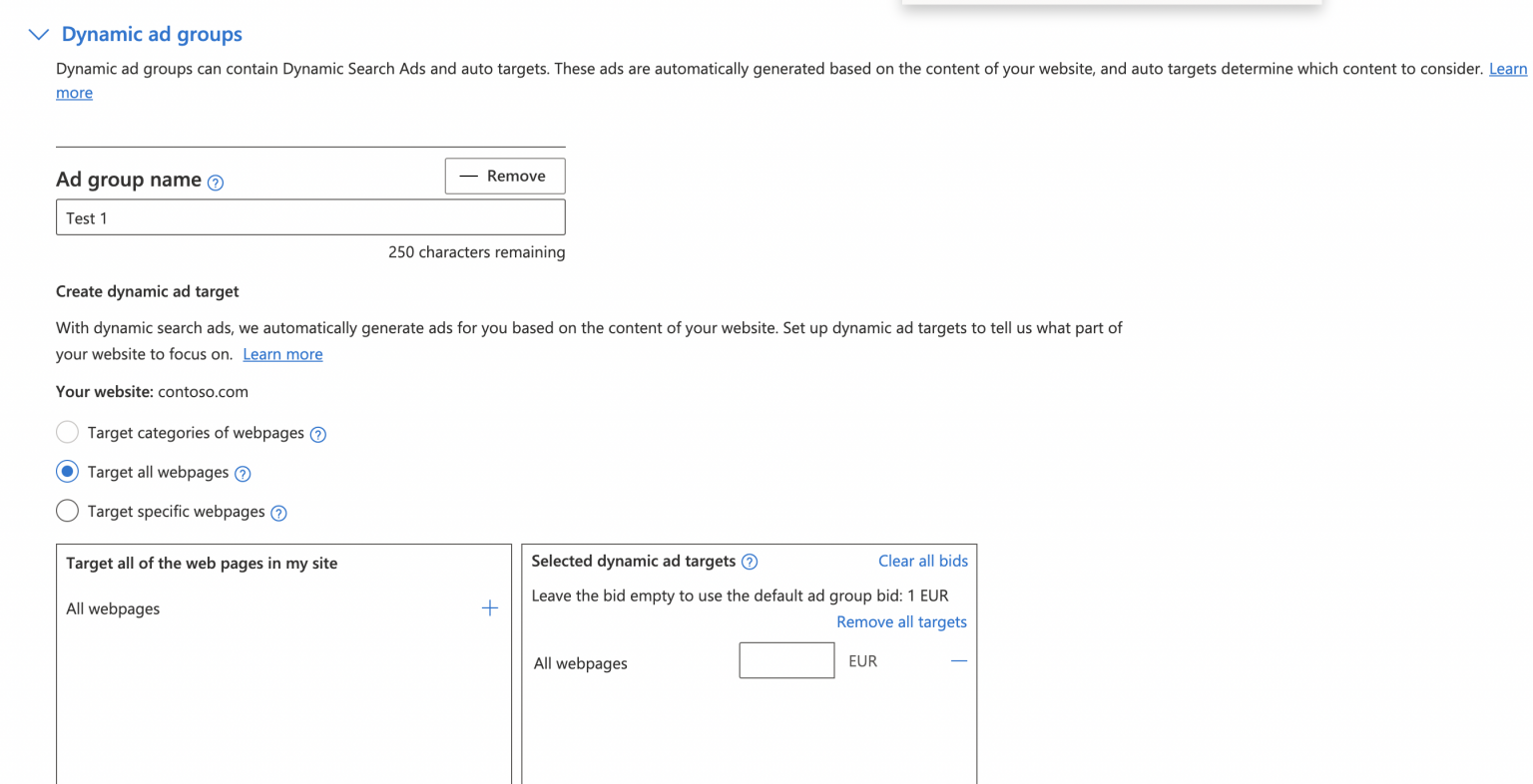Nowadays, there are ample options for digital marketing that many brands can take advantage of to generate new leads. If you’re looking into various types of Bing ads campaigns, we look into whether dynamic search ads are the right option for you, and if so, how to get your first campaign set up.
1 – What are Dynamic Search Ads & How Do They Work?
Sometimes known as DSAs, dynamic ads are a form of digital advertising hosted by search engines (such as Google and Bing) who feature a marketing service for brands to utilise to reach out and generate and convert leads through search engine ranking and driving them to the brand’s website. It works via audience targeting – the audience of which is derived and built based on their data and web-browsing history and engagements, coupled with the content on your website.
When you create dynamic ads via a search engine of choice, AI will scour your website to locate various search terms (key words) to then match them with what a lead may punch into the search engine when seeking a type of service or product, and will create a dynamic ad for attract profitable and conversion-likely leads based on this information.
You will likely see dynamic ads alongside PPC (pay-per-click) ads, as the two look and function very similarly. The difference between the two, however, is that DSAs tend to be more relevant to both the brand and the web-user because they are built around search engine queries and landing page text.
2 – Why Use DSAs For Marketing?
If you are a B2B or B2C brand – particularly one with an extensive catalogue of products to sell – DSAs can be extremely useful as part of your marketing strategy. Here’s why:
Matching Keywords & Headlines
When a web-browser punches in a certain query into a search engine, it’s very unlikely they use just one or two words. Often it’ll be a full sentence, such as “buy adidas shoes superstar size 5”.
We call these ‘long-tail keywords’. How dynamic ads work is they match a query like that with a headline on a landing page that will say the same thing (or something very similar). So, for someone searching for a specific shoes size model, your search ad would be the driver to your website, where your lead can order the pair of shoes (be converted).
Should You Be Using Dynamic Ads?
While there is certainly success to be garnered within dynamic ads, they’re not ideal for everyone – and there are a few downsides. For example, you don’t have as much control over the search engine query and landing page headlines as you would like. Or at least not as much control as you do with most other types of online marketing campaigns.
Also, when setting up your dynamic ad, it is important to search for negative keywords – especially within the first week or so of your campaign going live.
In terms of brands who would benefit from dynamic ads, the following are most likely to receive the best result:
- Large brands with vast, content-heavy websites, or retailers with ample product (i.e.: you have a website with a lot of landing pages).
- Businesses that niche in retail or travel, or local businesses seeking local trade.
- eComm retailers that have seasonal products – any brand that frequently changes inventory.
- Advertisers who want to utilise generic keyword advertising – predominantly if they have a well-optimised and well-maintained website.
- Busy advertisers who don’t have the time to build other, more dense and time-consuming campaigns.
Advertisers NOT likely to find success with dynamic ads:
- Websites in which the content changes on a regular basis (i.e.: brands which have daily deals or offers, etc.)
- Non-optimised websites/amateur websites. Site structure that isn’t great (including websites with limited or poorly-written copy), as it is difficult for a search engine to work through it to select good content to match with long-tail keywords.
3 – How to Set Up Dynamic Ads
Whether you’re working with an existing ad campaign, or building a new one, this step-by-step guide will help you to set up a dynamic ad campaign:
Existing Ad Campaigns
- Head to Microsoft Advertising and log-in. From there, go to the collapsible menu on the left-hand side and click “All Campaigns”, then “Settings”.
- Select the campaign you wish to work with.
- Go to “Dynamic Search Ads” and select the checkbox by the “Enable Dynamic Search Ads” option.
- Complete steps 6 and 7.
- Click “Save”.

New Ad Campaigns
- Head to the main menu and on the left you will need to click “Search Campaigns”, then “Campaigns”, then “Create Campaign”.
- Select the right objective for your campaign from the suggested options.
- Click “Next”.
- Make sure you click “Enable Dynamic Search Ads”.
- Input your website’s URL. You can then enter your site’s domain or subdomain.
- From the dropdown menu, select your website’s language.
- Choose your targeting source.
- Enable dynamic search ad text by selecting the “Enable Dynamic Search Ad Text” checkbox, if you wish to. Doing this will automatically generate ad text, so be mindful of that.
- Create a dynamic ad group with dynamic ad targets and then click “Save”.
- Create your DSA and then click “Save” (always remember to hit “Save” whenever the option appears, or you risk losing your work).
- Input your campaign budget and any other settings you require, then hit “Save”.
- You’re good to go!

Conclusion
Opting to include dynamic search ads as a part of your strategy can be very lucrative, but only if your brand meets the above criteria. If not, there’s a strong chance your campaign won’t be a success and you won’t see a return-on-investment.
If you’d like to learn more about how we help B2B SaaS and Tech companies grow their MRR through Bing ads, contact us online or send us an email today at info@getuplead.com to speak with someone on our team.
You might also be interested:


